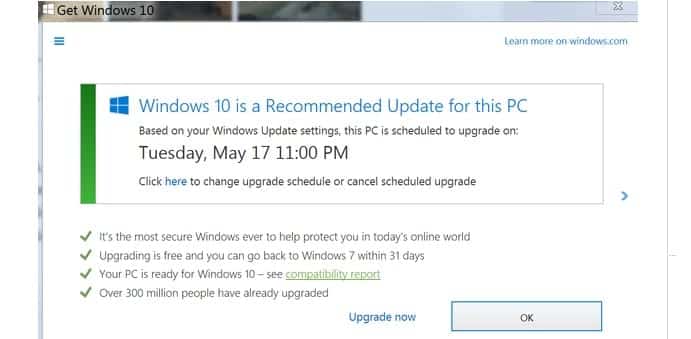Microsoft will now Auto-Schedule Windows 10 Updates
Microsoft released its latest operating system, Windows 10 on July 29 last year. The Redmond giant offered Windows 10 as a free upgrade for Windows 7 and 8.1 users for a period of one year. With Windows 10 currently running on 300 million active devices around the world, Windows 7 and Windows 8.1 users have less than 3 months to upgrade to the latest operating system. However, Microsoft has started to auto-schedule PCs to upgrade to Windows 10 with or without consent from end users.
Microsoft tied in several observing and data collection tools when it created Windows 10. The operating system has the ability to collection information such as your search history, emails, Windows Store usage, details of what applications you use, web usage, voice recordings, geographic information and almost whatever else that is available on your PC. Partly, this information is collected for bettering Windows-based services, but it is also utilized for market research and advertising purposes.
It does not come as a surprise that Microsoft wants everyone to use its new OS, because each user on Windows 10 upsurges the amount of advertising information available to Microsoft, which in turn allows Microsoft to earn more revenue from selling this data. As a result, Microsoft provided Windows 10 as a free upgrade to both Windows 7 and Windows 8, as users of either OS would likely not want to pay for a new OS on an already comparatively new PC.
While there were quite a few several users who wanted to continue with their older Windows OSes, but they were still subject to irritating pop-ups prodding them to move to Windows 10. However, the pop-up returns after a few short hours, even after you close it, persistently pushing you to upgrade.
Now, Microsoft’s malware-like upgrade system is becoming even more invasive by auto-scheduling upgrades to Windows 10, as we are closing in to the end of the free upgrade period. For instance, previously the Windows 10 upgrade reminder pop-up on a Windows 7 PC would no longer ask for upgradation. However, now it notifies that it has already scheduled an update for an XXX date.
While you are provided options to change the upgrade date or cancel the scheduled upgrade, the system isn’t actually compelling you to upgrade if you see it soon enough. There are chances that some users might not notice the pop-up and might find that their PC is stuck trying to upgrade to Windows 10 or hogging bandwidth while Windows 10 downloads.
As the official free upgrade of Windows 10 is expiring on July 29, now is the best time to switch to Windows 10. It is possible that Microsoft may continue to offer Windows 10 as a free upgrade in an attempt to tempt users to switch to Windows 10. It is also rumoured that Microsoft may be thinking of providing the Windows operating system as a service, which can be used by anyone for free with the company making all of its revenue from advertising. However, until now, Microsoft has not officially announced that it will do either. So, as of now, one should continue with the expectation that the free upgrade is available only for a short period of time.
If you wish to stick with your older OS, you should check your Windows 10 update pop-up daily to make sure it does not compel you to upgrade without your knowledge.
Microsoft will hopefully disable this bossy upgrade system after July 29. However, until then, you need to alert and careful as it is the only way to ensure that your system does not upgrade to Windows 10 without your knowledge.

